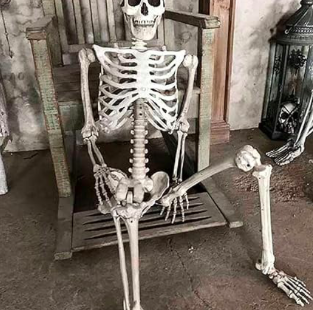7 Changes I'm Making To My Baseball Off-Season Programming

As the fall rolls along, I figured I'd share this post from a year ago. I'm really excited for yet another off-season with our baseball athletes.
It's really hard to believe, but it's going to be my tenth winter training dozens of High School baseball players. It's always such a fun time of year to take a step back and come up with a plan to help them get stronger and faster, with an eye towards their future.
I'm especially excited for the following tweaks/changes to my programming strategy this off-season.
1) Placing way more emphasis on assessing skeleton archetypes.
The assessment is just the first step. The second, and more important step after a is to utilize this information to impact my program design in a much more meaningful way. In the past, I really only utilized it to inform the breathing drills and mobility work I would prescribe. The biggest change will be utilizing it in a major way even further downstream into the exercise selection of the athletes' strength work.
I could write thousands of words on this subject, but essentially, every one of us falls into one of two categories: Wide ISA (infrasternal angel) or Narrow ISA.* You can't change which category an athlete is in, but we can program strategies and put them in positions to improve and optimize their overall movement capacity.
Why is this so important? It's difficult to be succinct on the subject, but: how we breathe has a massive impact on the position of the pelvis and axial skeleton, and therefore it impacts all distal and peripheral structures.

2) Being a WAY bigger stickler on how we perform our breathing drills.
Proximal function dictates distal function. Walk before you run. We need to master the basics and it starts with improving compensatory breathing patterns (which impacts everything further down the chain as outlined in point #1)
Positional breathing drills are a phenomenal way to tone down muscles we need to get to relax, and encourage other muscles to get active, that should in fact be working.
3 Breathing 💨 Drills For Wide ISA Throwers pic.twitter.com/LHtZwletf5
— Taylor Burns (@tburns34) October 19, 2023
3) Spending WAY more time educating on the front end to make sure our athletes know WHY we are doing what we are doing to improve overall buy-in.
Don't demand compliance. Grow ownership.
4) Timing rest intervals!!
I don't program cardio as it's not really needed in baseball, however, general aerobic capacity still needs to be an asset and not a detriment.
Since we have so many more athletes in the gym at a time, I will be creating a strict system they need to adhere to on their accessory work to ensure we are taking care of the aerobic capacity piece.
5) More emphasis on static stretching.
I'm kind of embarrassed it's taken me this long to get here. Personally, my body feels significantly better when I consistently static stretch. The industry still kind of scoffs at static stretching, but I'm bucking the trend fully moving forward.
It's not that I haven't had my athletes do it, but I have never specifically prescribed (and written into their program) their entire cool-down static stretching routine.
This will change now, with specific prescription, while keeping front of mind that not all stretching is good, and can in fact be harmful if we end up cranking on a joint or are creating instability where we don't want it.
6) Including speed circuits.
I've always followed a traditional model on our speed programming days (A,B,C, etc.) However, I think there is some real merit to building athleticism by programming supersets and or circuits of different sprint/agility drills, so long as proper rest is adhered to.
7. More emphasis on grip strength!
I still believe that if you have poor global strength, working on grip strength and doing curls is like spending money on new tires for an old, beat up car.
However, once we have some foundational strength and power, baseball players should absolutely get after forearm, biceps, triceps, and grip work!
Grip complex:
— Taylor Burns (@tburns34) October 19, 2023
▪️KB Bell Reverse Curls
▪️DB Head Drop & Catch
▪️DB Holds to Fail w/Fat Gripz pic.twitter.com/vG98Fo98qO
That's all folks. I am beyond fired up for this winter, as this is the most advanced group of athletes we've ever had at this age since so many have been training here so long!
*The ISA can be asymmetrical.
